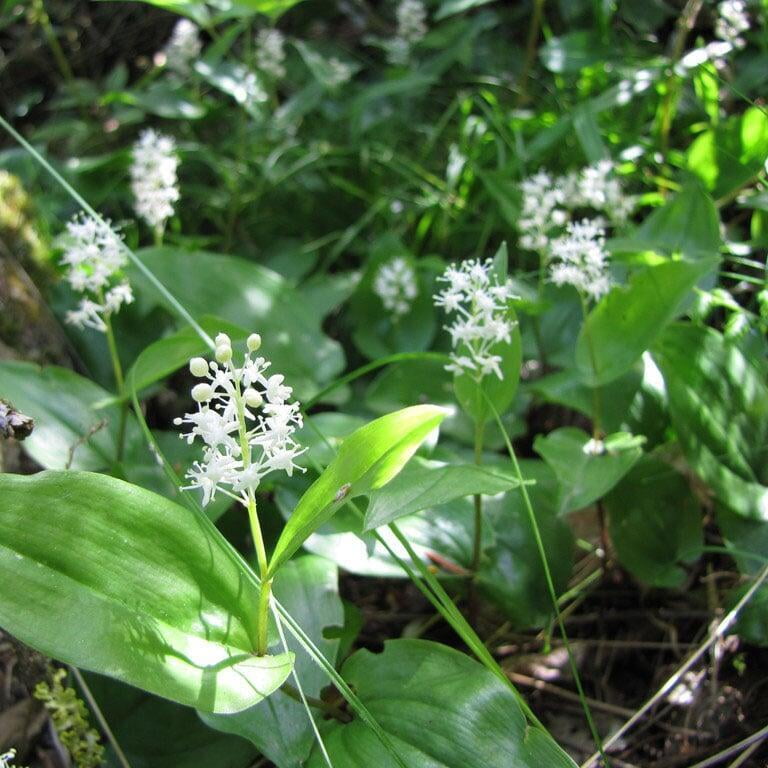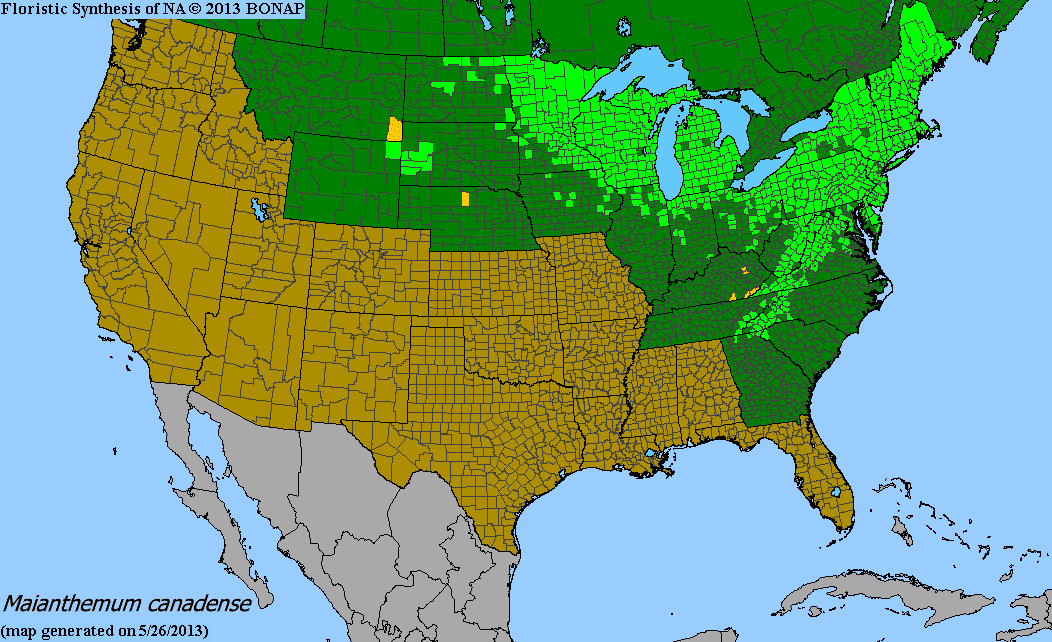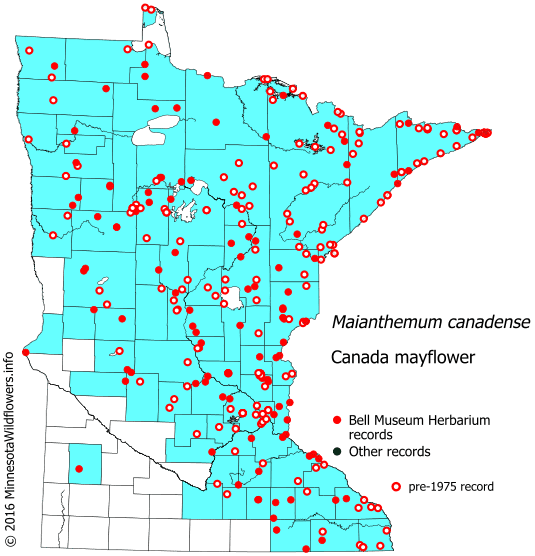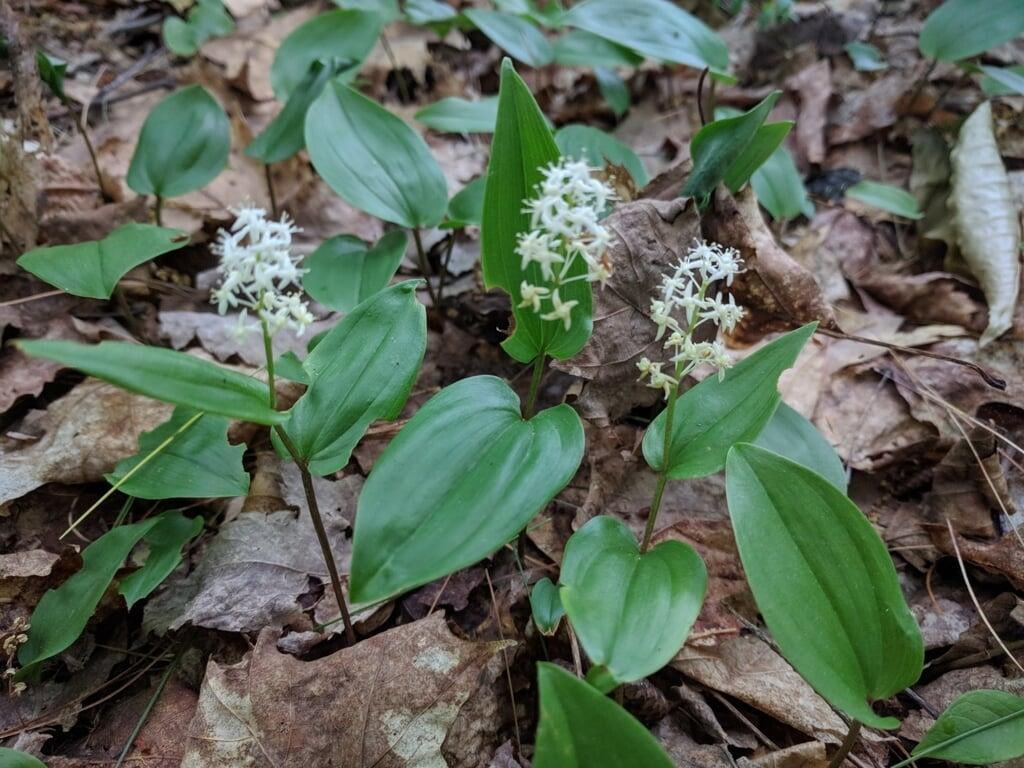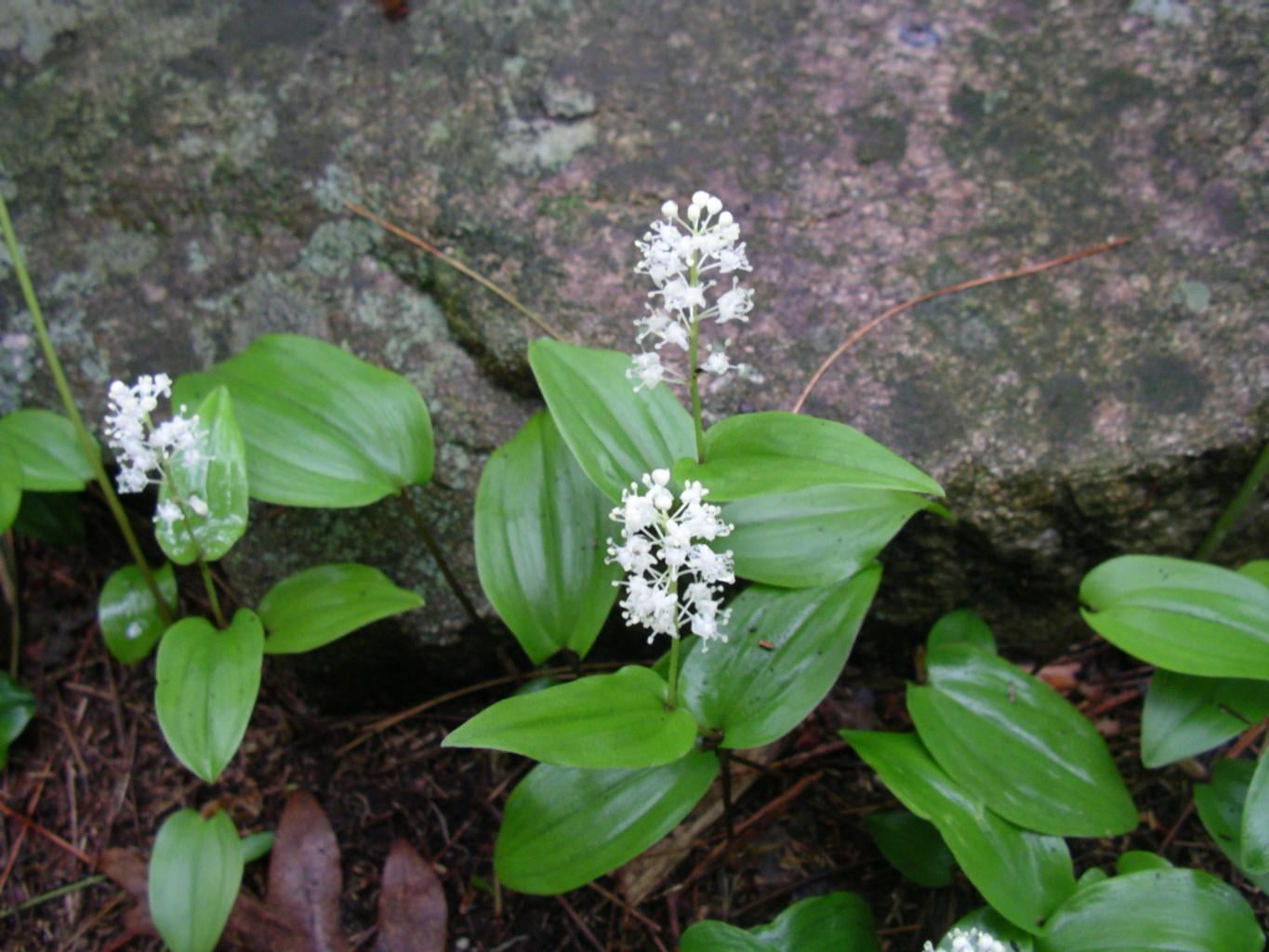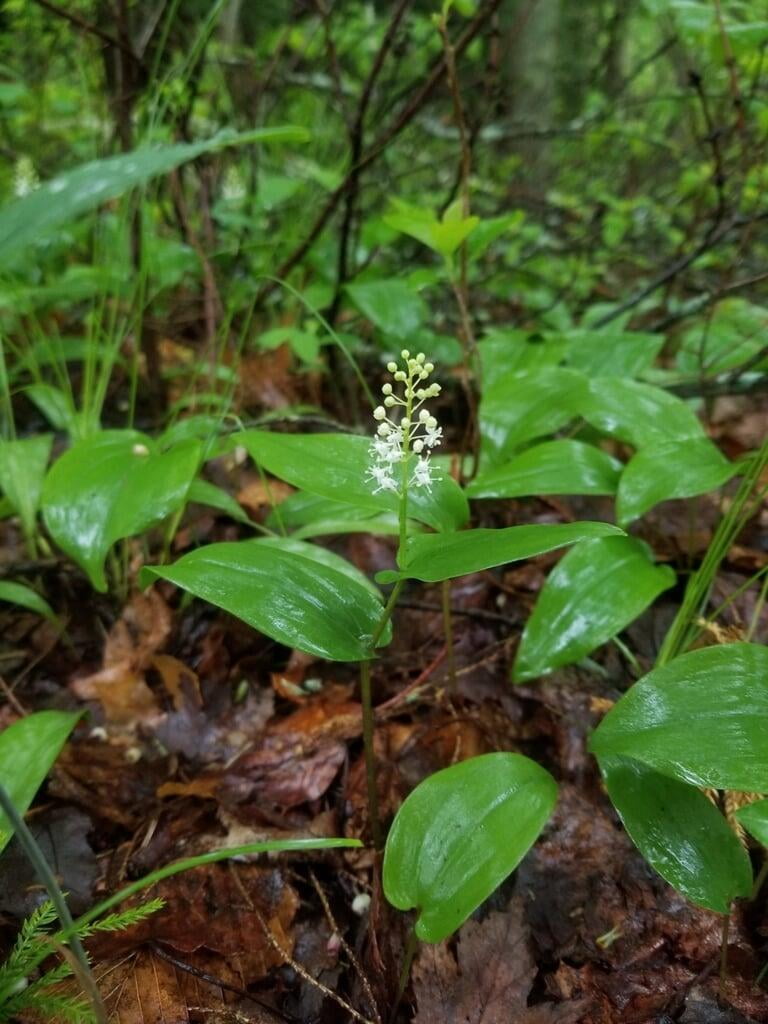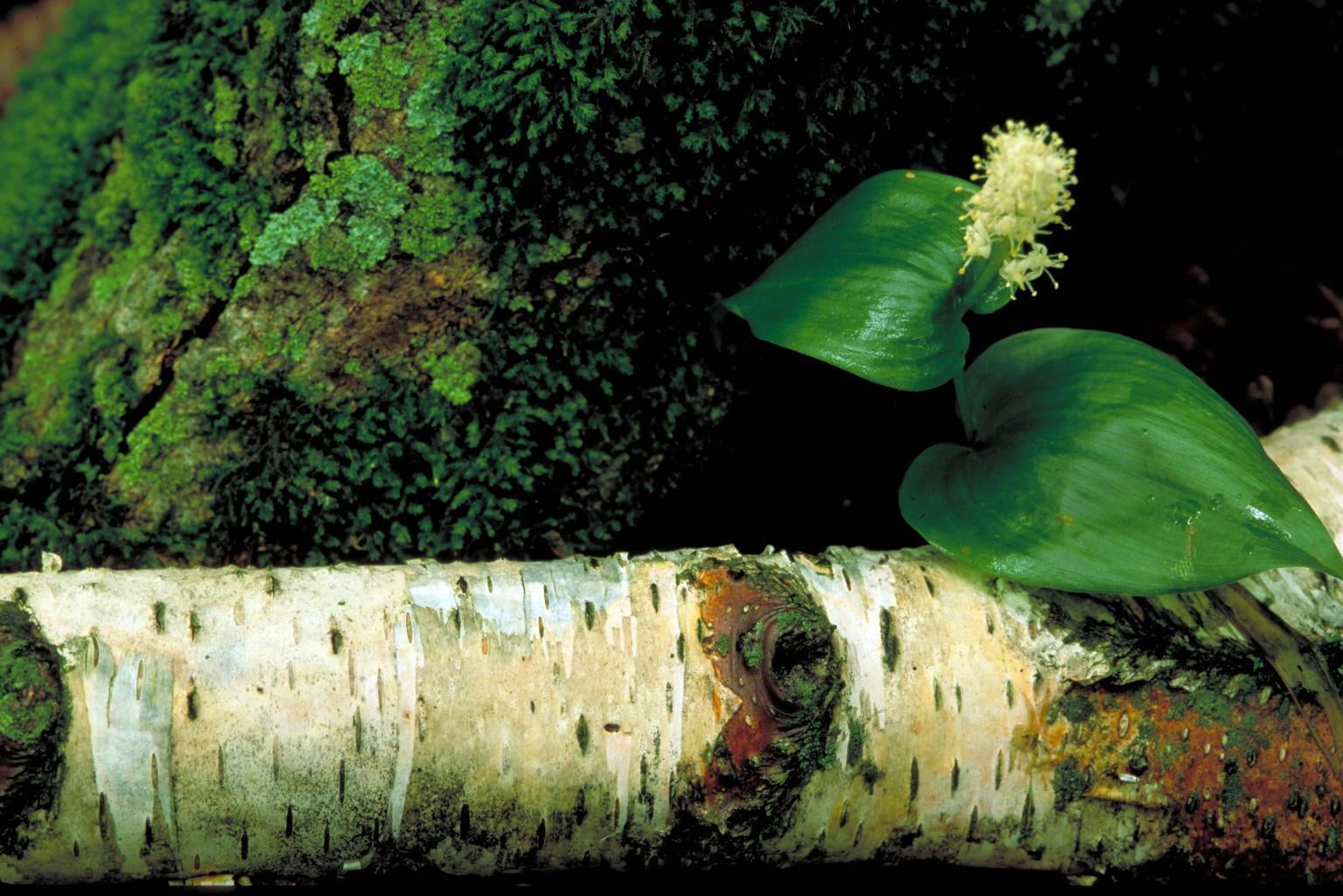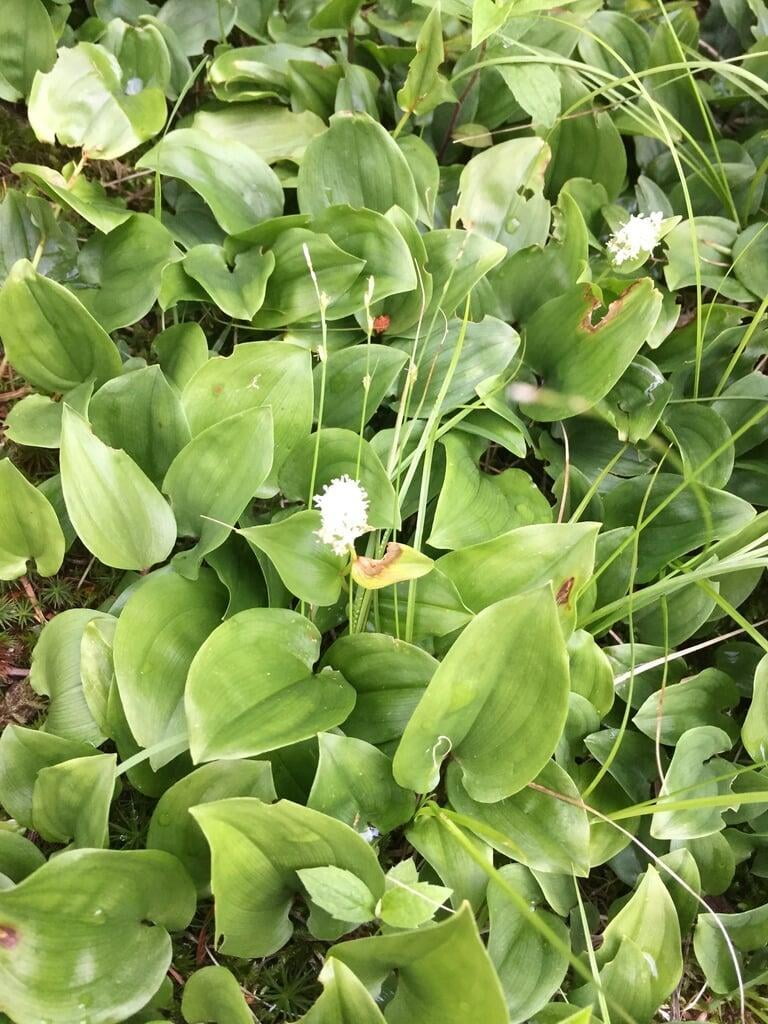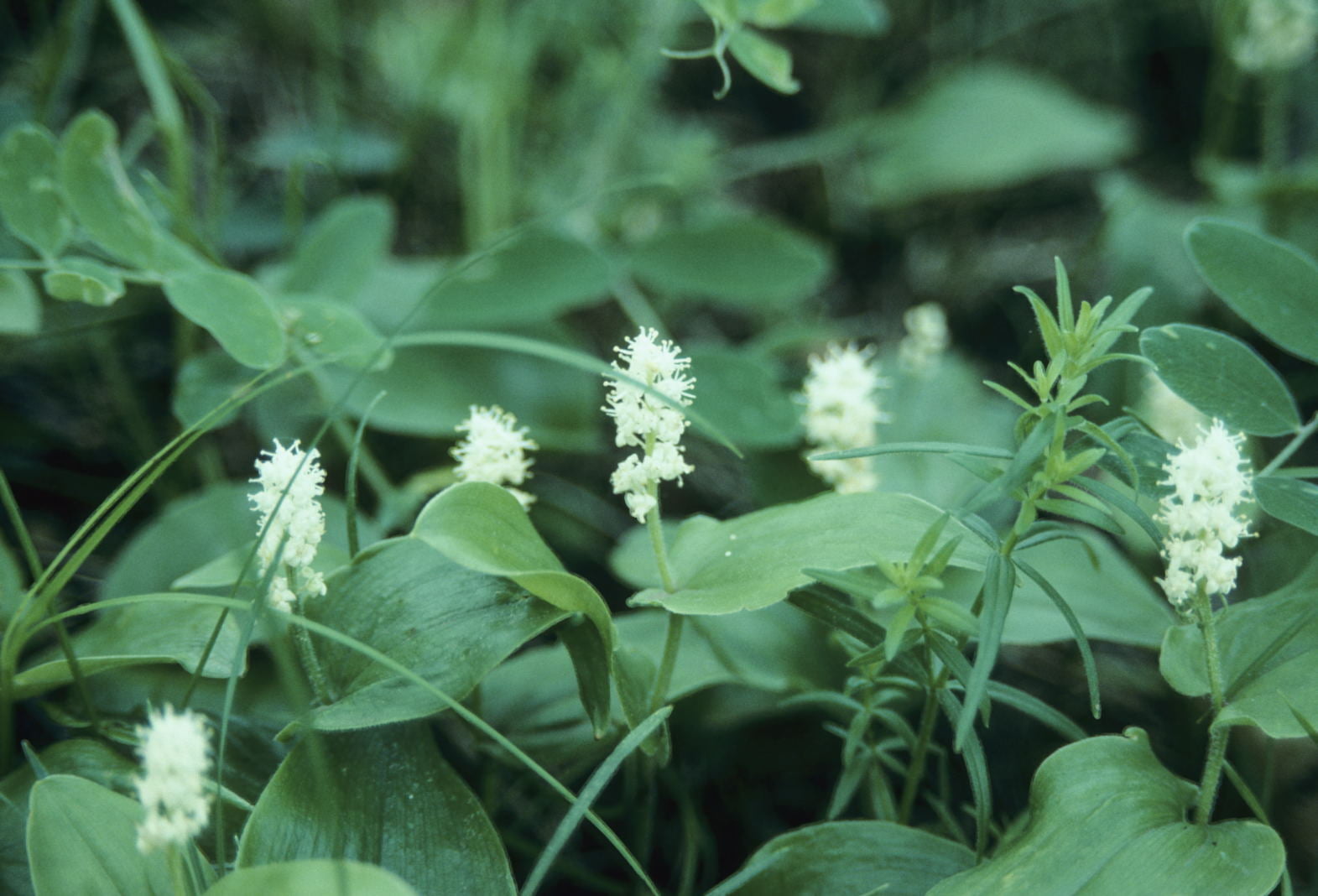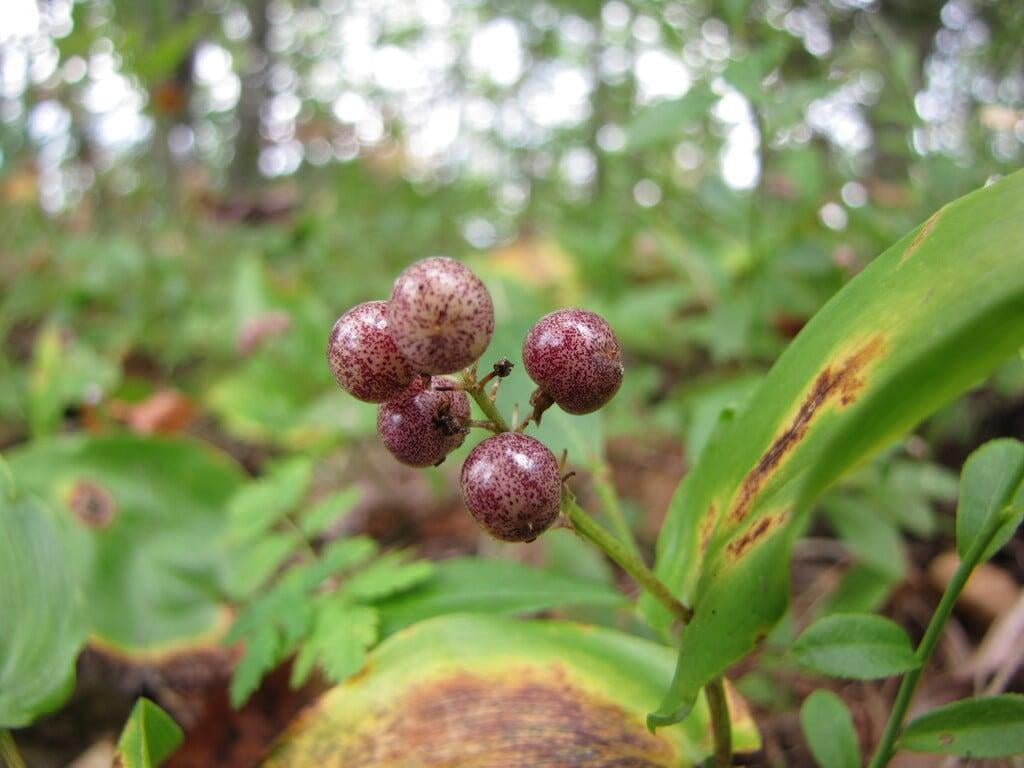Maianthemum canadense
Canada mayflower Description:
Maianthemum canadense, commonly known as Canada mayflower or wild lily of the valley, is a herbaceous perennial plant that is native to North America. It is a member of the lily family and is found growing in woodlands, forest edges, and along shaded stream banks.
The plant grows between 3 and 6 inches in height and spreads to form a dense mat of foliage. It has slender stems that emerge from underground rhizomes and are topped with clusters of small, white, star-shaped flowers. The flowers are typically arranged in a terminal raceme that can be up to 8 inches (20 cm) long. The flowers are followed by red berries that are an important food source for birds and small mammals.
The plant has glossy, oval-shaped leaves that grow up to 3 inches (7.5 cm) long and are arranged in pairs along the stem. The leaves are dark green in color and have a smooth, waxy texture. The plant is often mistaken for the invasive species, garlic mustard, but can be distinguished by the lack of a strong odor and the arrangement of the leaves on the stem.
Canada mayflower is a popular garden plant and can be grown in moist, well-drained soil in partial to full shade. It is a good choice for woodland gardens, rock gardens, and shade gardens, as well as for groundcover in shaded areas. The plant has a number of medicinal uses and has been traditionally used as a herbal remedy for a variety of ailments, including as a treatment for coughs, colds, and digestive issues.
Native Range:
Canada mayflower can be found most commonly growing the upper Midwest and Northeastern United States. Its range does extend Westward to Montana and South along the Eastern coast of the United States down to Georgia.
Standard Plant Information:
Plant Height: 3" - 6" inches
Bloom Time: May - June
Preferred Habitat: Does well in part shade to shade. Often found in woodland habitats.
Sowing:
For most homeowners, the best option is to scatter seed on the ground by hand broadcasting at a minimum of 16-64 pls ounces per acre. For even coverage, we recommend that you broadcast seed in perpendicular rows across the site to ensure even coverage.
You’ll want to broadcast any grass seed first, which will get raked into the soil lightly. Next, it is ideal to mulch the area lightly with either a clean (no seed) straw or preferably with our native Little Bluestem straw, sold at our retail garden centers. After a light mulching is complete, now it’s time to broadcast your native wildflower seeds, which should not be raked into the soil. A good rain or watering is sufficient to cover the seed.
Planting:
Simply dig a hole in the soil slightly larger than the plant’s roots. Ensure that the soil line of the plant is maintained during the transfer (i.e. the plant should be at the same level with the ground as it was in the pot). Pack any loose dirt back around the plant and make sure you water it well the same day to ensure it has the best chance of survival.

